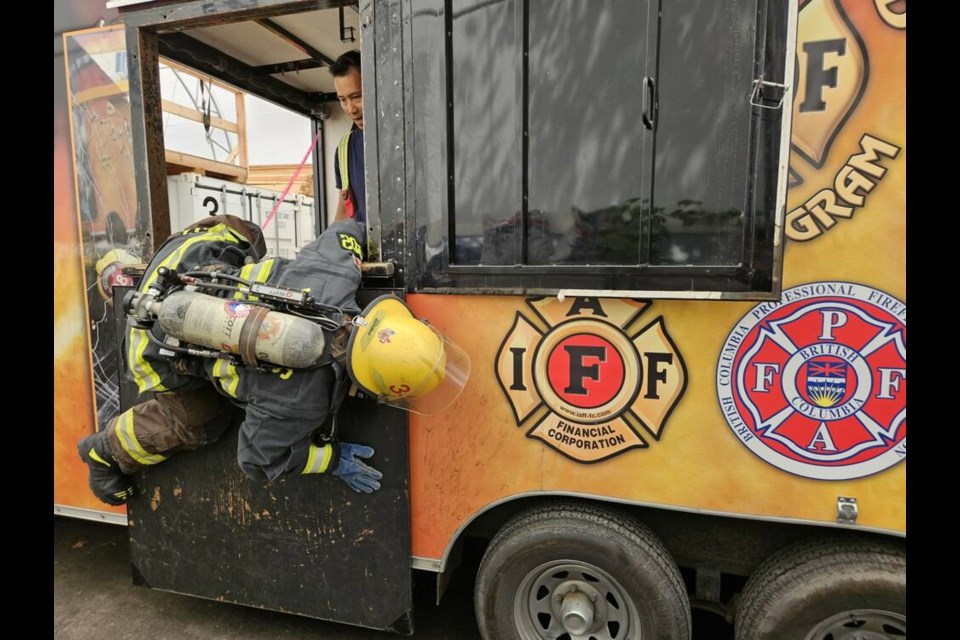Learning too react – and not panic – to mayday calls is one of the goals of a recent round of training undertaken by New Westminster firefighters.
Throughout June, members of New Westminster Fire and Rescue Service went through fire ground survival training, which is intended to save their lives if they should ever become disoriented, injured, trapped or separated from their fellow firefighters when fighting a fire.
“Last year, we sent six firefighters to get trained in this in fire ground survival,” said Glen Bailey, acting assistant deputy chief with New Westminster Fire and Rescue Services. “We were loaned the trailer once our trainers were trained up. This trailer travels throughout the province.”
The International Association of Fire Fighters provides a training trailer to fire departments participating in the program.
Bailey said the trailer was stationed at the Number 1 fire hall in New West for a month, during which time firefighters learned skills that could potentially save their lives. He noted that the prevalence of petroleum-based products, including furniture, creates challenges when firefighters respond to structure fires.
“It burns really quickly,” he said. “They are finding if a firefighter gets into that situation, they are not able to rely on the RIT (rapid intervention team).”
Equipped with a bunch of props, the IAFF trailer is used to help teach firefighters rescue themselves from a burning building.
“We do it blindfolded,” Bailey noted.
The 20-foot-long trailer helps prepare firefighters for situations they hope to never encounter on the job, such as being in a burning building when there’s a flashover and they need to get out immediately or where the floor collapses and they need save themselves.
According to the IAFF, fire ground survival instructors provide participating fire departments with the skills they need to improve situational awareness and prevent a mayday. Topics covered include: preventing a mayday; being ready for the mayday; self-survival procedures and skills; managing a mayday; and surviving a mayday and leading a rescue.
Bailey said he’s never known of these types of situations occurring during his 22 years with the fire department, but it’s critical that firefighters know what to do should a mayday occur.
“It’s about being prepared – being prepared for anything to happen,” he said. “We are trying to be as prepared as we can for the unpredictable.”
Training helps create a “muscle memory” that firefighters can call upon in the events these skills are needed, Bailey explained.
“They can react as opposed to panic,” he said.
Part of the training involves showing firefighters why people get into these situation and how to avoid situations where they need to self-rescue, but it also involves teaching them what to do to get themselves out or to be rescued if they should find themselves in those life-threatening situations.
“It’s a really neat prop. It’s really good training. It’s a lot of physical work,” Bailey said of the trailer. “The crews are coming out of it with sweaty smiles.”




